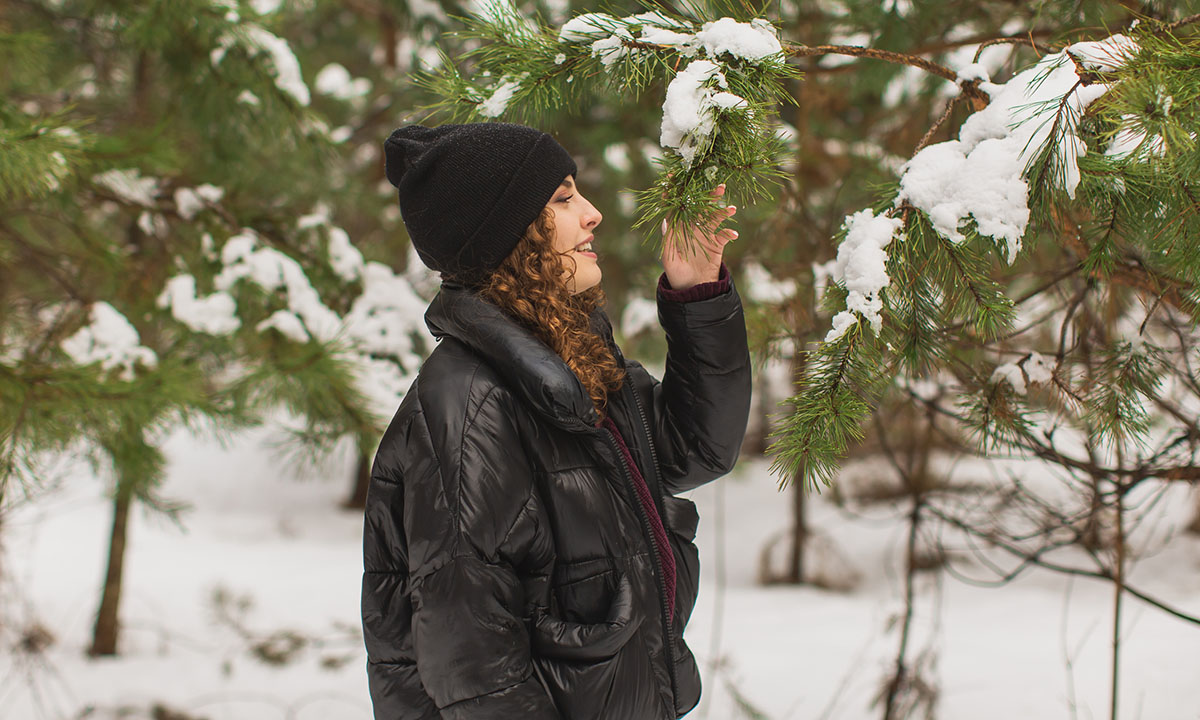

Foraging in the winter months may be more difficult than it is during warmer parts of the year, but many wild plants still grow in winter. Some varieties of edible mushrooms thrive in the winter months—particularly near trees. While the frost is always a threat to things that grow in the ground, mushrooms can be found during the coldest parts of the year if you know where to look.
Videos by Outdoors
Disclaimer: Foraging for mushrooms is not for beginners. Never eat anything you are unsure about. Many mushrooms and plants have toxic look-alikes and can be deadly. Take caution and do your research before foraging and consuming mushrooms foraged in the wild.
Watch for These Wild Mushrooms This Winter
- Yellowfoot Chanterelles
- Oyster Mushrooms
- Wood Ears
- Medicinal Mushrooms (Turkey Tails, Chagas, and Lion’s Manes)
- Velvet Shanks
5. Yellowfoot Chanterelles
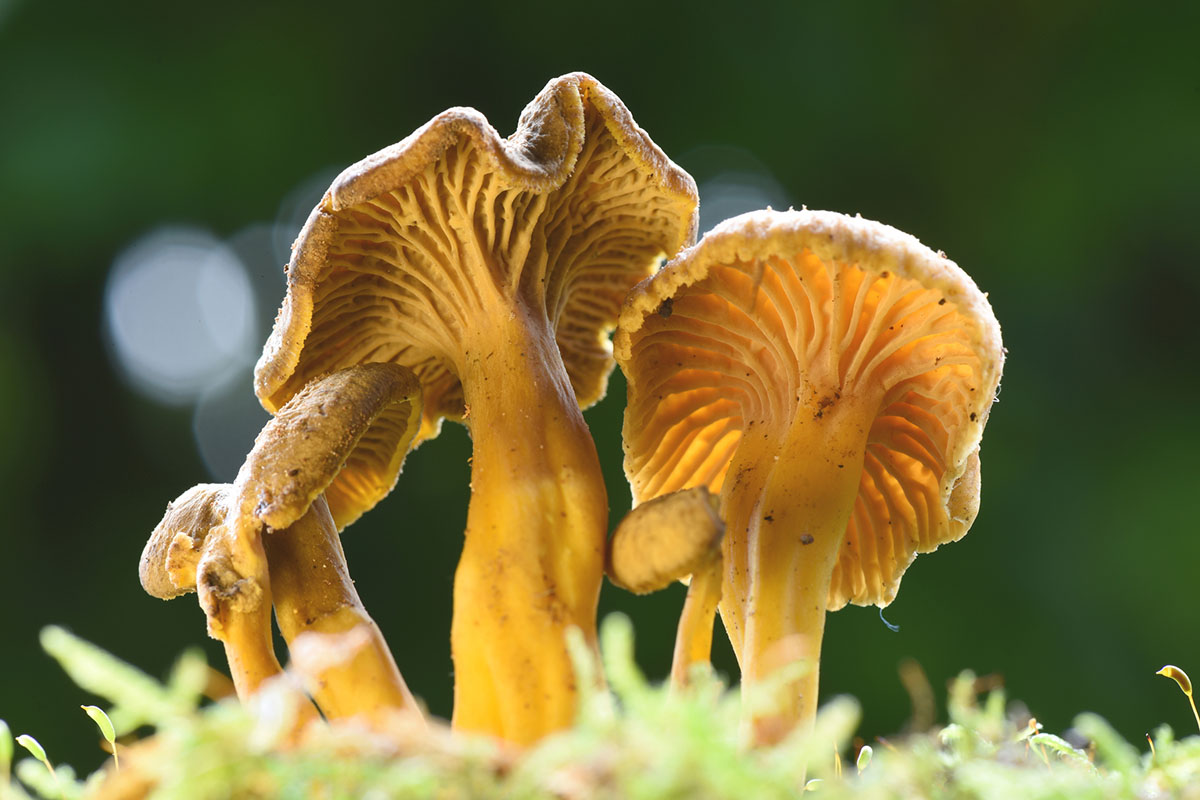
Decorated with the same false gills as chanterelles, yellowfoot chanterelles have a hollow stem and thrive in cold weather. This “funnel chanterelle” has a trumpet-like shape and a yellow-to-orange color. Look for them under coniferous trees or in mixed woodlands.
4. Oyster Mushrooms

Often found on dead wood, hardwood trees, and logs, these mushrooms can be foraged year-round. While they may not tolerate harsh extreme temperatures or overnight freezes, you can still find them during the cold months, generally from October to April. Oyster mushrooms have a distinct appearance, but you should consult a guide on winter oyster identification before consuming.
The color of the oyster mushroom can vary from blue-gray to gray to cream in color. The stem of the mushroom is short and white. The oyster mushroom is often considered a great beginner mushroom to forage. Discard the mushroom stem before cooking. It has a neutral taste. Throw it into a pasta dish or fry it with some eggs on winter days.
3. Wood Ears
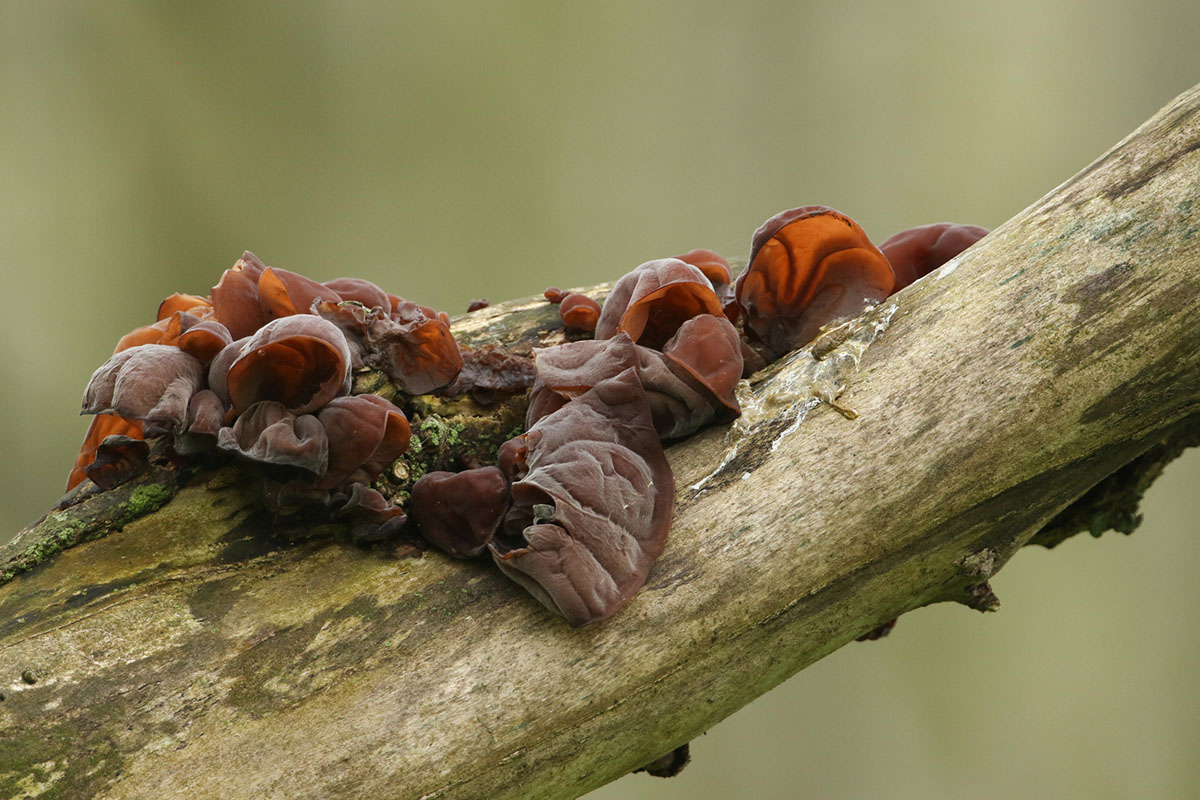
Also a fan of dead branches and trunks, wood ear mushrooms can be found outside of winter, but they also thrive in the winter months, from September to March. Looking freakishly like a real ear, this unique mushroom has an almost jelly-like texture and is reddish-brown. It’s soft and pliable, but the flesh is a bit tough. Its skin-like appearance may put you off, but is it certainly edible.
A very common mushroom, wood ears often grow on sycamore and elder trees. The U.S. Forest Service offers some information to help identify this edible mushroom. Use it in soups, salads, and sauces, but, remember, ears are not best fried.
2. Medicinal Mushrooms
These three winter-growing mushrooms are extremely useful and excellent for improving health.
Turkey Tail Mushrooms

This medicinal mushroom grows on trees through the winter, making it great to forage in the colder months. Turkey tail mushrooms have a distinctive striped pattern reminiscent of a turkey’s tail, but that doesn’t mean they’re always easy to identify, so be careful.
Turkey tail mushrooms can be used to make tea, and they are great for the immune system. Studies on this medicinal antioxidant mushroom suggest they improve cancer survival rates when used alongside traditional treatments. They also combat viral infections, improve digestion, and promote a healthy microbiome.
Chaga Mushrooms

Usually found on birch trees, this useful, medicinal mushroom is parasitic and will slowly kill the host tree over many years. Studies show that chaga mushrooms contain antioxidants and are anti-inflammatory, and they can reduce cholesterol, lower blood pressure, ease arthritis pain, combat cancer, and slow the aging process.
Lion’s Mane Mushrooms
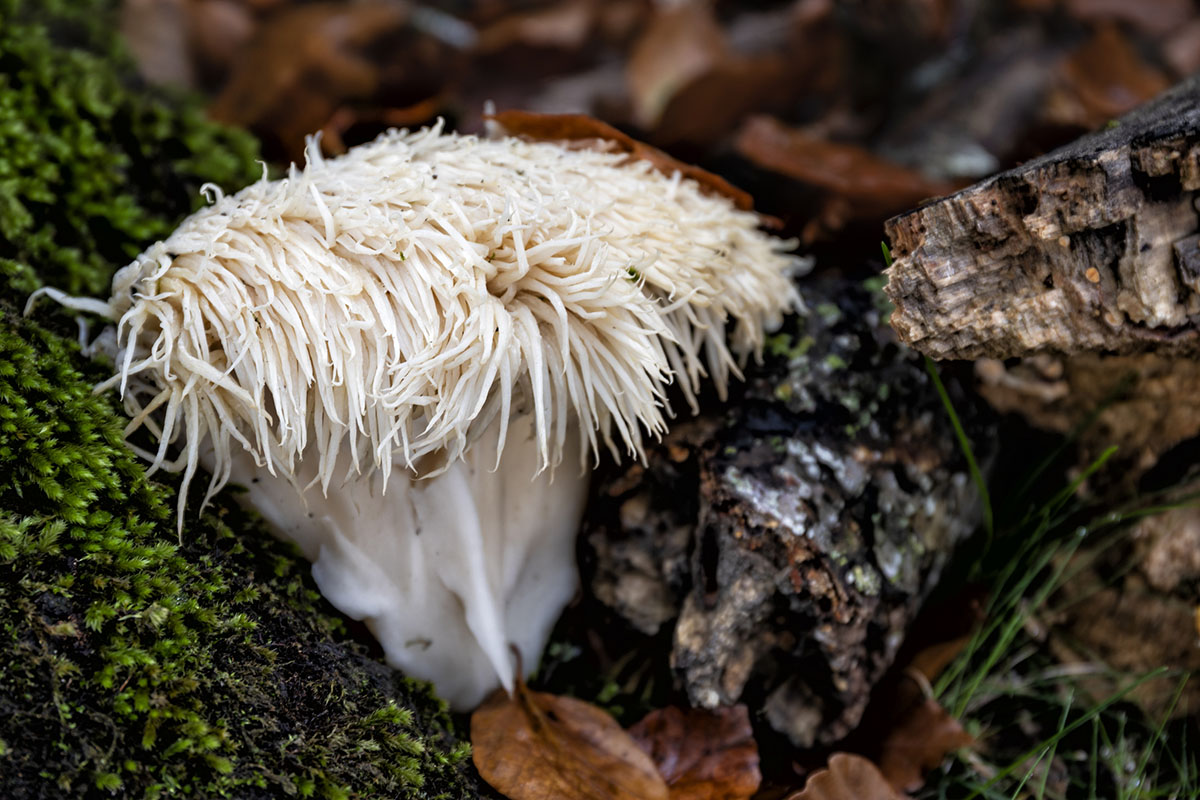
This tasty winter mushroom is supposedly easy to identify thanks to its textured hair-like “mane” appearance combined with its stark white coloration. Often found in cold (but not extremely cold) environments, this mushroom can be foraged in winter. You can eat this unique mushroom raw, cooked, dried, or steeped as tea. It’s being studied as a treatment for Alzheimer’s, dementia, and other neurodegenerative diseases.
NOTE: Lion’s mane mushrooms are illegal to forage in some places. Please always check local regulations before foraging.
1. Velvet Shanks
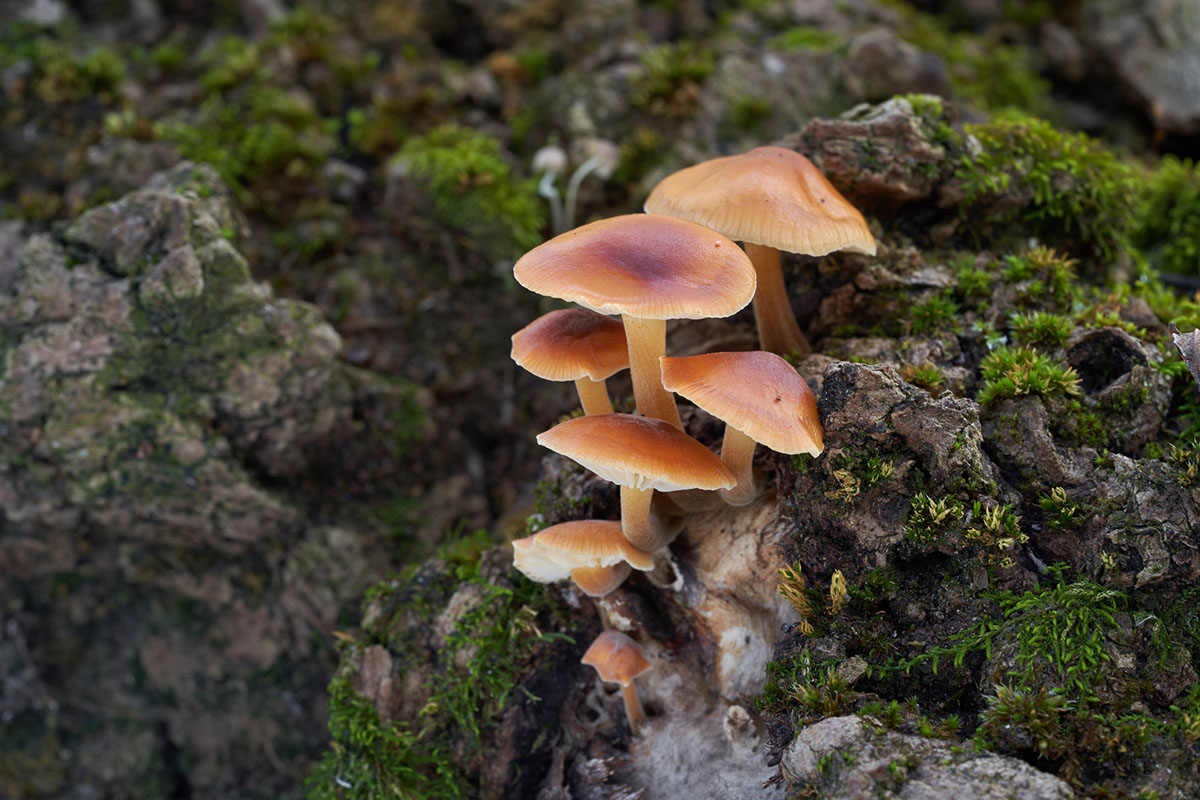
As with many of the other winter mushrooms, the velvet shank is often found growing on dead or dying trees, especially on beech and oak trees as early as September but mainly from November to April. They will not survive a freeze, but they can tolerate some frost.
Velvet shanks get their name from their velvety brown caps and sometimes glossy stems. Called “enoki-take” when grown commercially, these mushrooms are recognizable in the wild by their greasy-looking, orange, flat caps, although they may look different in stores due to how they are grown. When cooking velvet shanks, remove the stem.
Other Mushrooms to Forage in Winter
- Enoki mushrooms have long, slender stems and small, white caps and often grow on dead wood.
- Blewit mushrooms are purple to lilac in color and have a nearly convex cap. They are often found in leaf litter or grassy areas in late fall and winter.
- Black trumpets, or the trumpet of death, are edible, despite their name. They are dark brown to black with a funnel-like shape.
Remember that accurate identification is crucial when foraging for wild mushrooms, especially in the winter when fewer species are available. Some edible mushrooms have toxic look-alikes, so it’s essential to consult reliable field guides, experts, or local mycological societies for guidance and to ensure your safety.
Article updated on Sept. 22, 2023
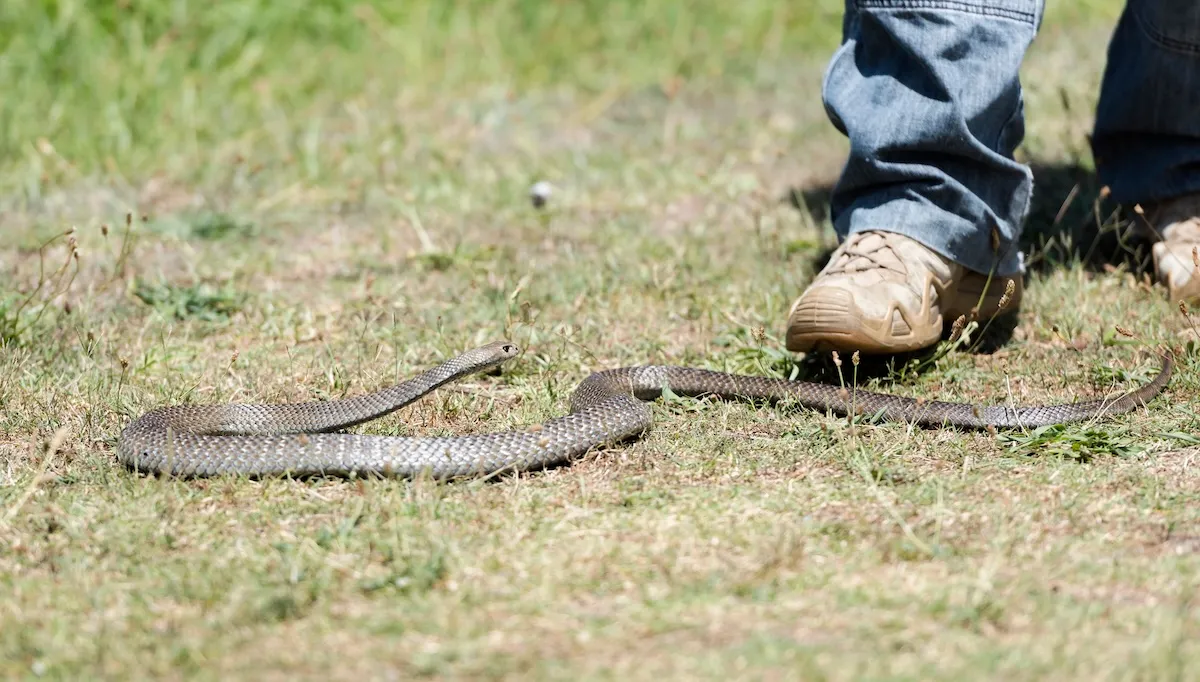
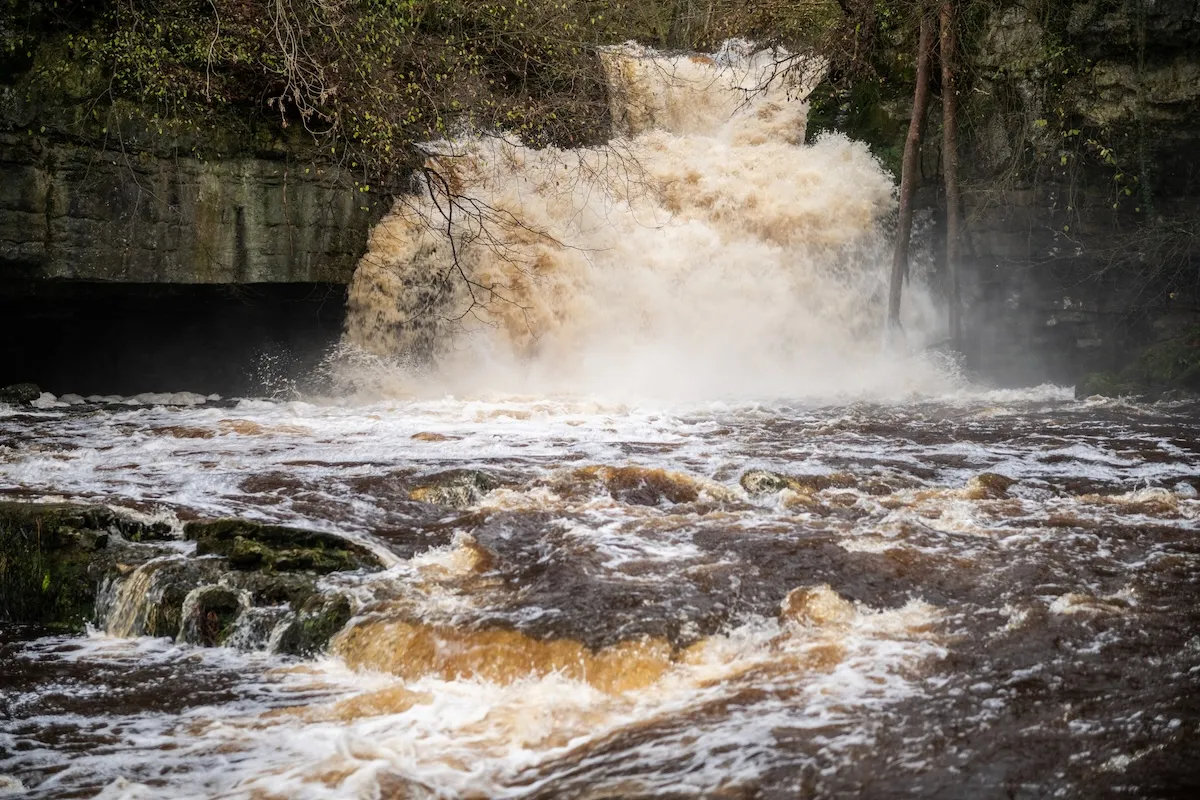


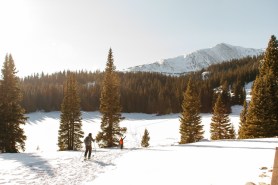



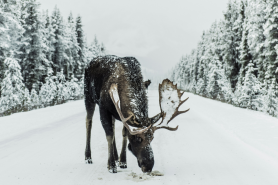

If you are going to write about mushrooms, at least make sure the photos are actually of the mushrooms that you are talking about. You have a photo of golden chanterelles instead of yellowfoot/winter chanterelles
Hey. Good article, but the pictures of the yellow foot mushroom is incorrect and is a Cantharellus species vs Craterellus species
Lions Mane fungi is protected under schedule 8 of the countryside act 1981. It is an extremely rare fungus and should never be picked. Please make sure you checked wether these are protected before you tell people to pick them.
In fact I have just checked and it is in fact illegal to pick or even remove a small piece of lions mane. ( If you are ever lucky enough to see one).They have the highest protection offered to plants under section 8 of the wildlife and countryside act 1981
Thank you for sharing we love to eat lions mane here in Michigan and it is plentiful,a lot of people sell it here